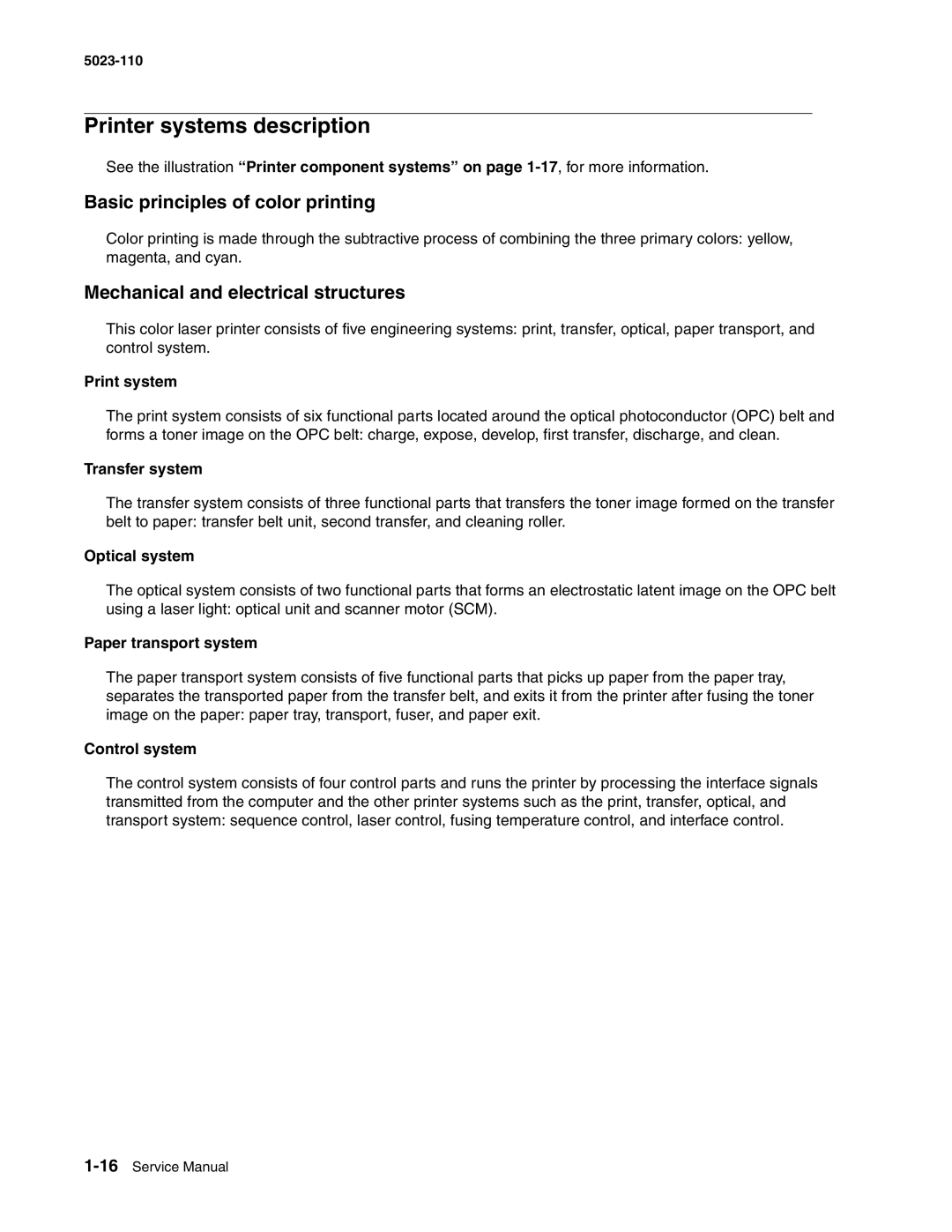5023-110
Printer systems description
See the illustration “Printer component systems” on page
Basic principles of color printing
Color printing is made through the subtractive process of combining the three primary colors: yellow, magenta, and cyan.
Mechanical and electrical structures
This color laser printer consists of five engineering systems: print, transfer, optical, paper transport, and control system.
Print system
The print system consists of six functional parts located around the optical photoconductor (OPC) belt and forms a toner image on the OPC belt: charge, expose, develop, first transfer, discharge, and clean.
Transfer system
The transfer system consists of three functional parts that transfers the toner image formed on the transfer belt to paper: transfer belt unit, second transfer, and cleaning roller.
Optical system
The optical system consists of two functional parts that forms an electrostatic latent image on the OPC belt using a laser light: optical unit and scanner motor (SCM).
Paper transport system
The paper transport system consists of five functional parts that picks up paper from the paper tray, separates the transported paper from the transfer belt, and exits it from the printer after fusing the toner image on the paper: paper tray, transport, fuser, and paper exit.
Control system
The control system consists of four control parts and runs the printer by processing the interface signals transmitted from the computer and the other printer systems such as the print, transfer, optical, and transport system: sequence control, laser control, fusing temperature control, and interface control.
